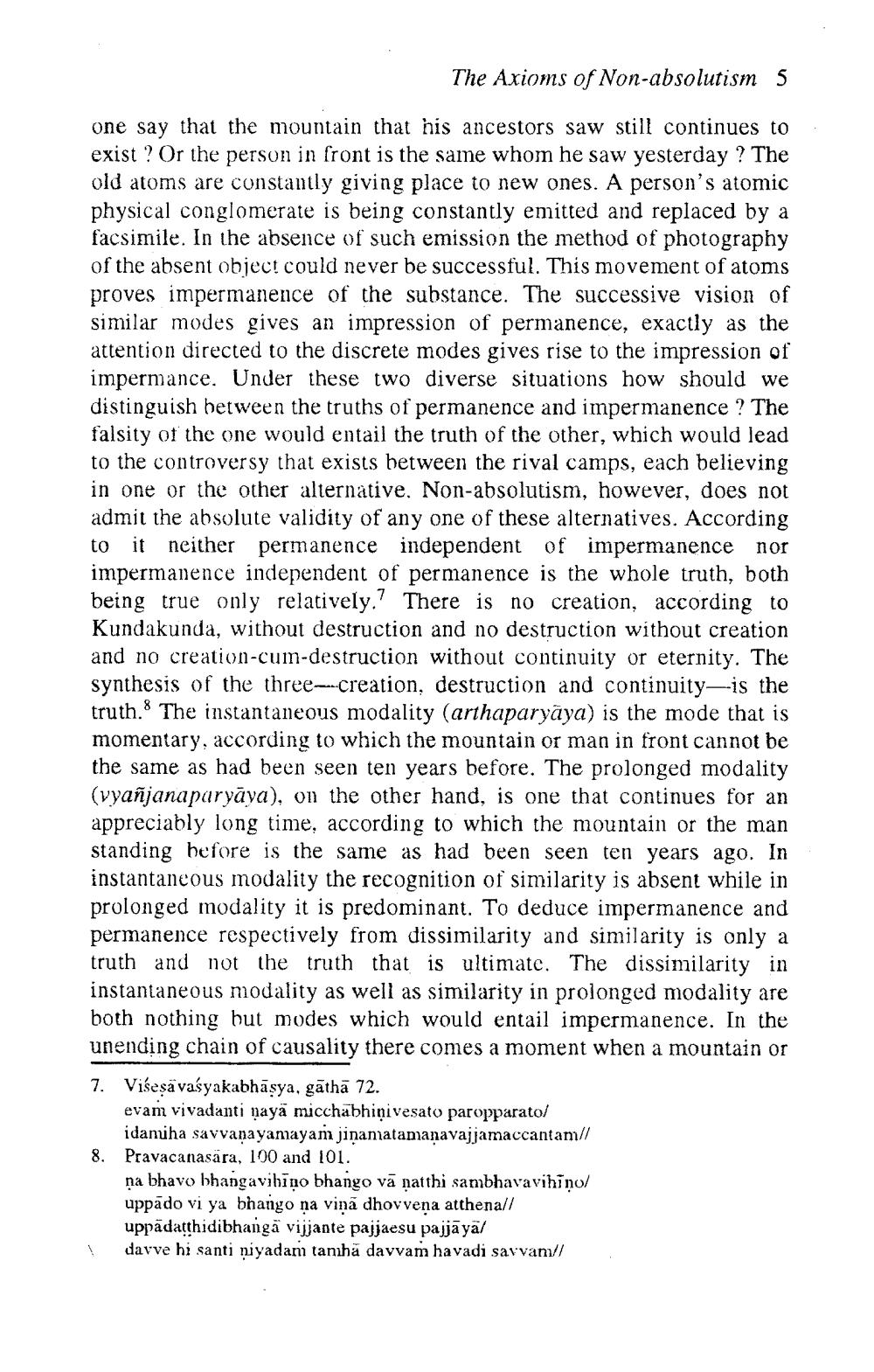________________
The Axioms of Non-absolutism
5
one say that the mountain that his ancestors saw still continues to exist ? Or the person in front is the same whom he saw yesterday ? The old atoms are constantly giving place to new ones. A person's atomic physical conglomerate is being constantly emitted and replaced by a facsimile. In the absence of such emission the method of photography of the absent object could never be successful. This movement of atoms proves impermanence of the substance. The successive vision of similar modes gives an impression of permanence, exactly as the attention directed to the discrete modes gives rise to the impression of impermance. Under these two diverse situations how should we distinguish between the truths of permanence and impermanence ? The falsity of the one would entail the truth of the other, which would lead to the controversy that exists between the rival camps, each believing in one or the other alternative. Non-absolutism, however, does not admit the absolute validity of any one of these alternatives. According to it neither permanence independent of impermanence nor impermanence independent of permanence is the whole truth, both being true only relatively. There is no creation, according to Kundakunda, without destruction and no destruction without creation and no creation-cum-destruction without continuity or eternity. The synthesis of the three-creation, destruction and continuity-is the truth. The instantaneous modality (arthaparyāya) is the mode that is momentary, according to which the mountain or man in front cannot be the same as had been seen ten years before. The prolonged modality (vyañjanaparyāya), on the other hand, is one that continues for an appreciably long time, according to which the mountain or the standing before is the same as had been seen ten years ago. In instantaneous modality the recognition of similarity is absent while in prolonged modality it is predominant. To deduce impermanence and permanence respectively from dissimilarity and similarity is only a truth and not the truth that is ultimate. The dissimilarity in instantaneous modality as well as similarity in prolonged modality are both nothing but modes which would entail impermanence. In the unending chain of causality there comes a moment when a mountain or
7. Višesävaśyakabhāsya, gathā 72.
evam vivadanti nayä micchabhiņivesato paropparato/
idamiha savvanayanayam jinamatamanavajjamaccantam// 8. Pravacanasara, 100 and 101.
na bhavo bhangavibīņo bhango vā natthi sambhavavihiņo/ uppādo vi ya bhango na viņa dhovvena atthenal/ uppādatthidibhangä vijjante pajjaesu pajjāya/ davve hi santi niyadan tanıha davvam havadi sayvan//




